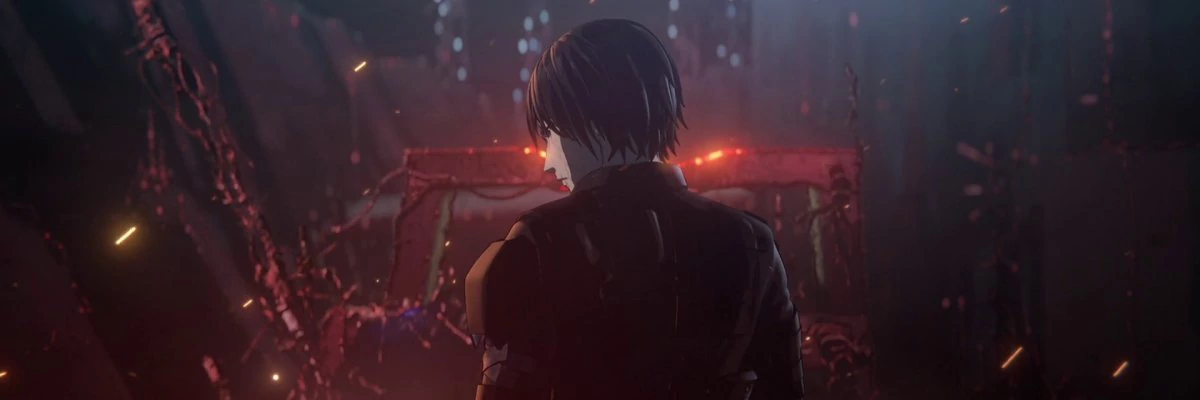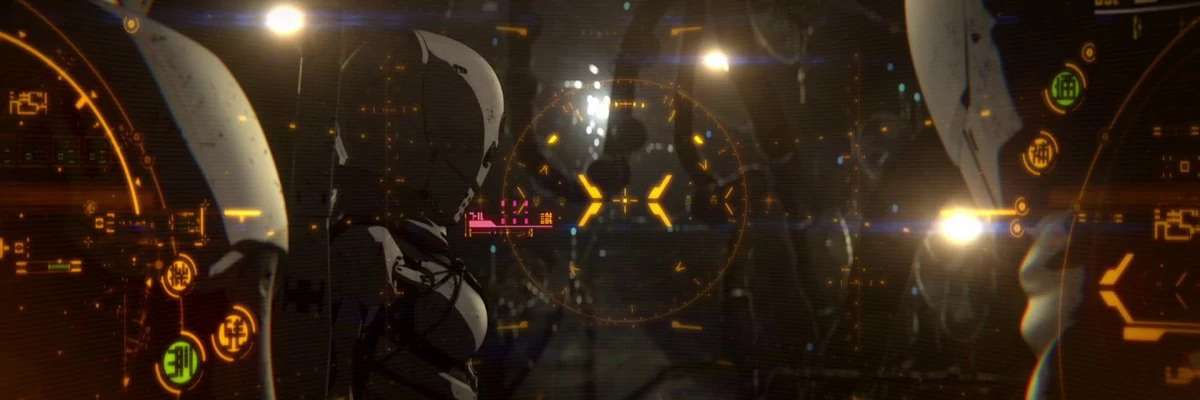Blame!

Last year, word got out that Netflix was doing a full-length anime feature based on Tsutomu Nihei's Blame!, with Ajin and Knights of Sidonia director Hiroyuki Seshita helming the project. Blame is an all-time cross-medium favorite of mine, but looking at earlier adaptation attempts I tried to keep my expectations low. The film saw its global release on Netflix last week (up yours Cannes) and even though I was prepared for the worst, I was still pretty eager to see how it translated to the (not so big) screen. Turns out my fears were completely unfounded.

I'm not a big manga reader, but when I first picked up Blame I was sold on it immediately. I'm an immense cyberpunk fan, but realistically it's a very tough genre to do in cinema. Cyberpunk films turn out either very low budget (think Shinya Tsukamoto's work) or severely lacking in punk (think The Matrix). When doing a manga none of that matters, there's just the illustrator and a blank piece of paper. So Tsutomu Nihei went all-out when he worked on Blame!. The result was a tough, impenetrable but eerily imaginative, attractive and mind-blowing piece of art, to the point where it became my favorite cyberpunk anything, hands down.
Adapting it to the screen was going to be a serious challenge though. There's not a lot of coherent storytelling in the manga, the pacing is all over the place (large sections where nothing is happening are followed by extremely chaotic and brutal fights) and the overall design isn't very commercial. All the praise to Netflix for making it happen nonetheless. They brought in director Seshita (who worked on Knights of Sidonia, a series based on another Nihei manga), they contacted Nihei himself to help out with the adaptation, and they put down a decent sum of money, making sure this wasn't just some upgraded TV-series episode. After that they did their typical "hands-off" approach and let the creative people do their job.
Rather than cram the entire manga into one film, they picked a single story arc and expanded on that. Where the manga follows Killy, a stark and enigmatic wanderer looking for surviving humans in an ever-growing mega structure, the film turns it around and tells the story of one of the surviving tribes, who just happen to run into Killy. It's probably a little disappointing if you were expecting to get the full Blame experience in a single film, at the same time it leaves a lot of potential for future films while making sure there isn't an information overload taking away from the experience. A choice that somehow feels quite deliberate.

Blame is an extremely visual experience, so one of my main concerns was whether they'd be able to translate Nihei's unique style (a former architect) to the screen. That dark, gritty, decomposed yet very architectural world is one of the main draws of the manga and not so easy to do in animated form. They did well keeping the cel shaded look from Knights of Sidonia. It allows for far more detail in the character designs and architecture and it helps to make the action scenes that more frantic and alive. It's not like the same effect can't be achieved in traditional animation of course, but it's a lot more expensive to do. On top of that, there's only a select group of animators who can pull it off, and they tend to come with their own signature style (like Takeshi Koike).
Not everyone is going to appreciate that they cut the animation frame rate in order to give the film a more traditional animation feel, but I actually prefer it over the slick, full CG look. The character designs are a bit softer compared to the manga, but overall they remain pretty close to the source material and while the film doesn't feature many of the signature bad guys, the more generic Safeguards are pretty kick-ass still. All in all the film looks stunning and well beyond what I'd expected they could achieve.
The soundtrack is a bit trickier though. I'm kind of opinionated when it comes to cyberpunk and music, but realistically speaking I'm well aware that I'll never get to see a true match-up of my preferred music in a (cyberpunk) film. That said, the soundtrack still feels a little too fantastical at times. I do get that they went with a more tribal vibe, but it makes it too Middle-Earth fantasy, which just doesn't work for the setting. It's not just all bad, there are definitely some good parts too, especially when they start playing around with static and noise, but these are a too few and far between. It feels like a missed opportunity. As for the dubs, Netflix was nice enough to prepare 5 different language dubs and just as many subtitle options, so there's plenty of choice. I flipped through them and as always I preferred the Japanese dub, with the English and German ones feeling the most out of place, but if you have trouble reading subtitles there definitely are options.

The main critique I've read so far is that the film fails to give a firm grip on its setting. While that's definitely true, it's actually "worse" in the manga. The difference there is that Nihei had 10 books to expand his universe, something a lot tougher to accomplish in a 100-minute feature. Even so, I felt they did a good job introducing various aspects of the Blame universe while still keeping things mysterious and adventurous. If you're clingy when it comes to narratives, Blame probably just isn't the thing for you as part of its appeal is in its expansive universe and the sense of adventure you get when exploring it together with the characters. Not knowing everything there is to know is just part of the deal.
That said, the Blame universe is far from random. It may take several viewings (and/or reads), but when everything starts to click together it becomes clear that Nihei put a lot of thought and effort in how everything connects. The world of Blame is something that goes beyond the typical "computers have taken over" future we've become used to seeing in American cyberpunk and it's all the better for it. The film honors that depth, but in a slightly different way. Some familiarity with Nihei's universe will definitely come in handy when watching this film, but if you think that the manga will magically clear up all the confusion, think again.
Blame turned out a lot better than I expected. It's not the ultimate adaptation, for that the direction itself is a little too safe and the music isn't on point, but considering the strong niche appeal of the manga and the commercial goals of Netflix, it's far edgier than I imagined it to be. They left Nihei's appeal and style intact, the action sequences are brutal and the mega structure looks as cool as it does in the manga. There's still a lot left to explore in Nihei's Blame universe and the film does feel like a setup for more to come. I for one would be incredibly happy to see a sequel in the same vein.